Mahinga kai is gathered and harvested seasonally throughout New Zealand. In the South Island, Kāi Tahu, the Māori tribe of the South Island, undertake these practices at certain times of the year. This usually takes place when the resource is plentiful, ripened and fat. Explore the Christchurch City Libraries mahinga kai web page for more information.
Not all mahinga kai are food resources. Some resources are used to build, construct, weave and even preserve food. Use these resources to find out more about mahinga kai.
- Mahinga kai – Environment Canterbury
- Ngāi Tahu Mahinga Kai – Te Rūnanga o Ngāi Tahu
- Mahinga Kai – a beginners guide – Stuff
- Mahinga kai Ōtakaro – Regenerate Christchurch
PŌHĀ
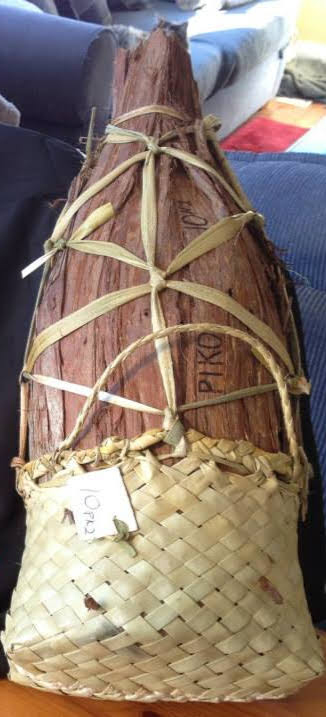
Pōhā are traditional food storage containers that are still used by the Metzger whānau / family of Kāi Tahu to preserve Tītī – Sooty Shearwater or Mutton-birds. These birds are caught on the Moutere Tītī – Mutton-bird Islands that mainly lie south of Rakiura / Stewart Island.
Pōhā are made from rimurapa / brown bull kelp for the container, totara bark to protect the rimurapa, which is placed in a harakeke kete / NZ flax bag and laced together. Watch this video of Uncle Tiny Metzger of Kāi Tahu talking about and making pōhā on the mahinga kai webpage of Te Rūnanga o Ngāi Tahu.
For full information, explore Pōhā: a clever way of storing food by Dr Michael Stevens
Hei mahi – things to do
- Using clean recycling items create an alternative container to store non-food items
- Cover a balloon in paper and glue, leaving the top open. Pop the balloon then decorate your new container
- Draw a pōhā – what else could you cover the pōhā in to protect the kelp bag of food
- List things you could store in a pōhā
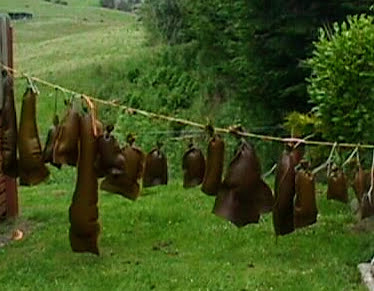
MŌKIHI
Mōkihi are rafts or watercrafts that are commonly used on inland waterways such as rivers and lakes. They are temporary seasonal watercrafts that are normally used during the summer months.
Mōkihi are mainly made from raupō / bull rush which grows along the banks of rivers, lakes, streams and in swampy areas. However, there are some are some made from korari / flax stalks. Bundles of material are tied together tightly by rope or harakeke / flax to form the raft.
Mōkihi are different to boats as mōkihi sit in the water where boats sit on the water. They are moved either by a long pole used to punt or push the mōkihi or with a paddle. Mōkihi were once used to bring goods from one area to another like we use boats, trucks and trains. They were also used to heard ducks, a net would be strung between two mōkihi and the ducks were gently herded to the bank where they could be gathered.
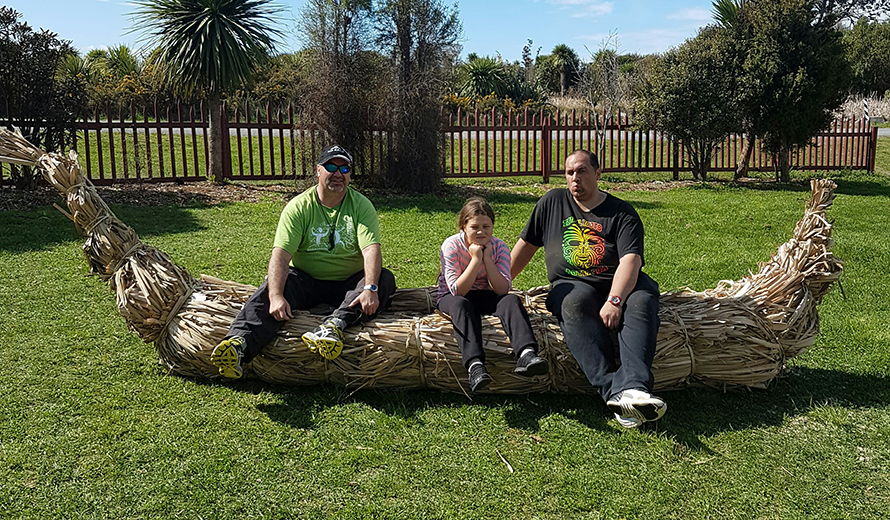
To learn more about mōkihi, watch this video of Joe Wakefield of Kāi Tahu whānui talking about and making mōkihi from the mahinga kai webpage of Te Rūnanga o Ngāi Tahu.
Hei mahi – things to do
- List things you could use to make a small mōkihi from
- Explore your home and yard to find things to make a mōkihi from
- Draw / design an adventure you could have on a mōkihi
- Explore Google maps to find the names of rivers and lakes near your house
TUNA
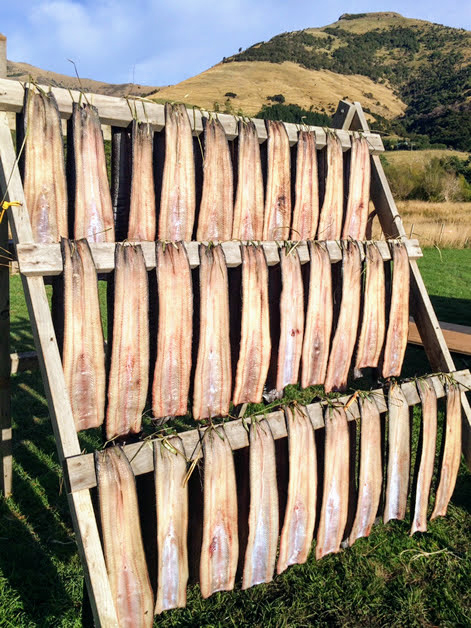
Tuna is the Māori word for eel. Tuna are found in most lakes and rivers of Te Waipounamu / South Island. Kāti Makō, Kāti Irakehu have caught tuna for generations at Poranui near Wairewa / Lake Forsyth on Te Pātaka o Rākaihautū / Banks Peninsula. Where other areas use hīnaki / eel pot or a net to catch their tuna, Kāti Irakehu use a pīhuka or gaff and manmade drains to catch theirs.
Tuna are caught seasonally at Poranui at a time known as the ‘Tuna Heke’ – Tuna migration when mature Tuna travel to the sea to migrate to their breeding grounds in the Pacific. This is usually from February to April each year.
The time of Whiro, the new moon is the best time to catch tuna as they prefer nights with no moon to travel the waterways. Kāti Irakehu normally preserve their Tuna through a process known as pāwhara – to dry tuna using salt as a preserving agent, but they are most famous for their smoked Tuna.
For more information, watch this video of Iaean Cranwell of Kāti Irakehu talking about Tuna on the mahinga kai web page of Te Rūnanga o Ngāi Tahu.
Hei mahi – things to do
- Draw / design a hīnaki – have a look at this hīnaki at Te Papa to give you some ideas
- Make a Tuna sock puppet out of an old sock and things you find around home – make sure you check to make sure the sock is old
- Explore the internet to find different types of Tuna
INANGA / INAKA
Inanga is the Māori name for Whitebait, it is also known as Inaka here in the South Island. This term is given to small young fish 25mm to 50mm that travel in schools / groups along the banks of rivers, lakes and streams of coastal New Zealand. Some people call the small whitebait mārearea and inanga are the more mature species. No matter what name you call them they are a much sought after delicacy.
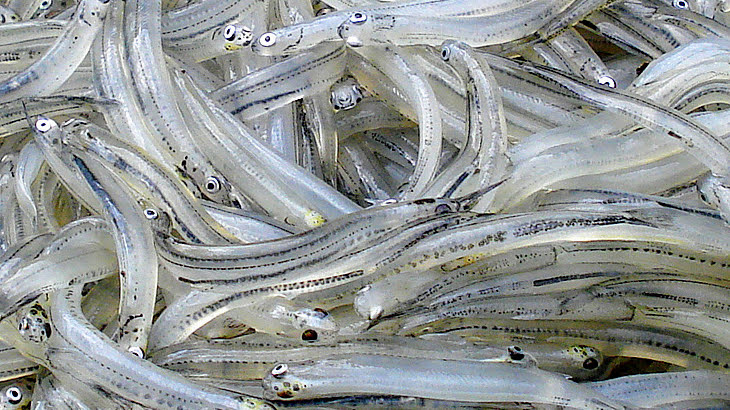
The inanga season – when people catch them, is usually in early spring. The whitebait season normally runs from mid-August till the end of November all over New Zealand except Te Tai Poutini / West Coast South Island where their season is from September to the end of November.
Inanga are caught with fine nets and/or screens that are placed in the tidal flow along the waters edge of rivers or lakes. The nets and screens cannot be fixed nor are you allowed to alter the river bank placing your net or screen. This webpage Whitebaiting from Te Ara – Encyclopaedia of New Zealand explains more about whitebait. There is also another webpage T.E.R.R.A.I.N that will tell you more about Inanga.
For more information watch this video of Paul Wilson of Kāti Mahaki speaking about Inaka in South Westland.
Hei mahi – things to do
- Design a net that you could use for catching Whitebait.
- Make a net to hold a stone using this video how to make a net
- Explore the Te Papa Atawhai – Department of Conservation (DoC) Whitebait webpage
- Draw / Design the life cycle of Inanga (using the DoC webpage)
Maatakiwi
Māori Services


Add a comment to: Ngā Whāinga – Challenges: MAHINGA KAI – Traditional food and other natural resources